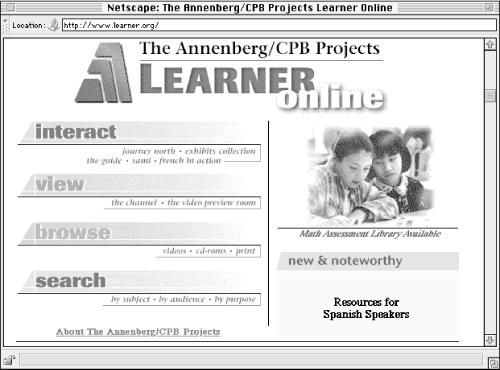Types of Labeling Systems
In web sites, labels come in two formats, textual and iconic. We typically find them used in two ways: as links to chunks of information on other pages (usually within the context of navigation systems, as index terms, or as labels for links), and as headings that break up and identify the chunks of information on the same page (much like the heading on this printed page). Of course, a single label can do double duty; for example, the link Contact Us could lead to a page that uses the title label Contact Us.
Labels Within Navigation Systems
Navigation system labels demand consistent application more than any other type of labeling system. Navigation systems, as we described in Chapter 4, occur again and again within a web site. Just as users rely on navigational systems to be positioned on a page consistently and look the same throughout the site, they rely on their labels to work in a consistent, familiar way, as in Figure 5.1. Effectively applied labels are integral to building this sense of familiarity, so they’d better not change from page to page. That’s why using the label Main, on one page, Main Page on another, and Home elsewhere will surely destroy the familiarity that the user needs when navigating a site.

Figure 5-1. The labels Interact, View, Browse, and Search are part of a site-wide navigation system. This labeling system uses consistent verb-based ...
Get Information Architecture for the World Wide Web now with the O’Reilly learning platform.
O’Reilly members experience books, live events, courses curated by job role, and more from O’Reilly and nearly 200 top publishers.

